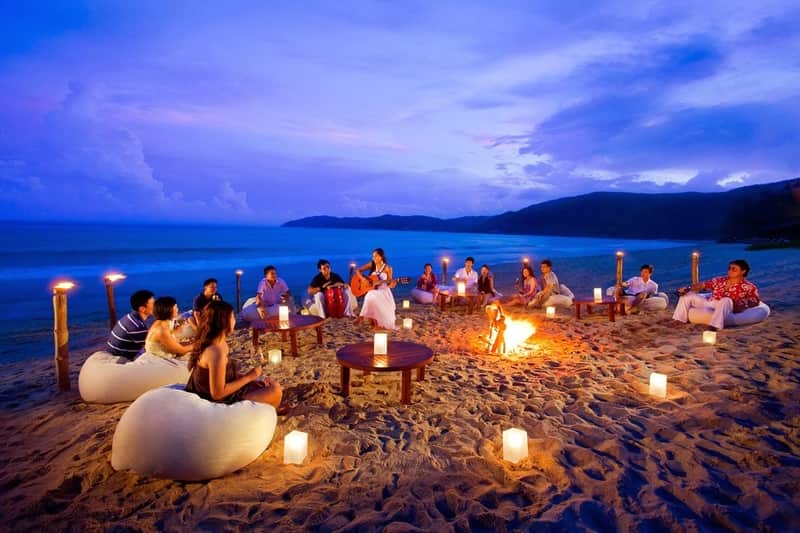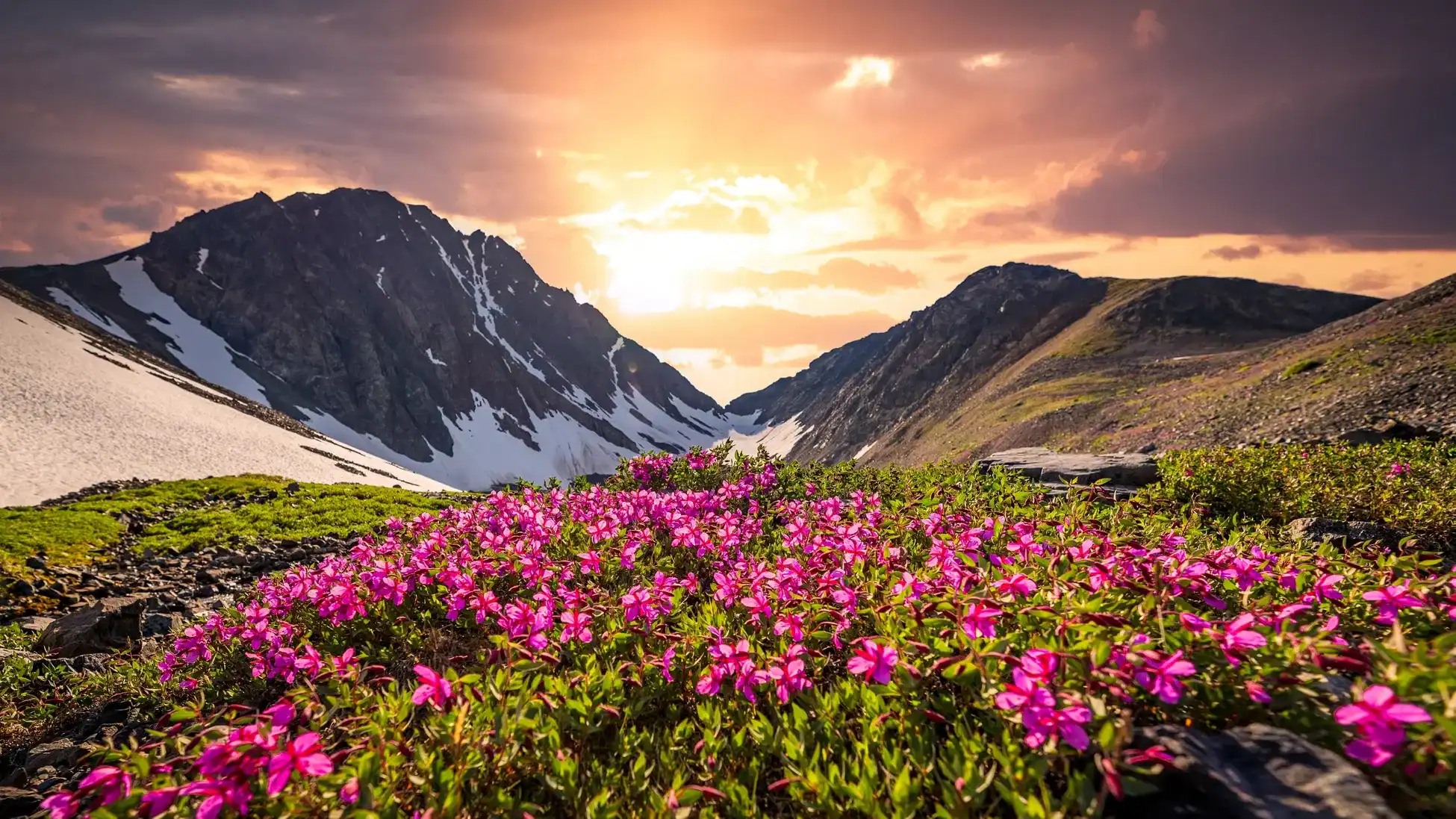
See Amazing Flowers: A Guide to Valley of Flowers
The Valley of Flowers National Park, a world heritage site, is a nature lover’s paradise. Thus, the high-altitude Himalayan valley is carpeted with 500 species of alpine flowers that bloom majestically during the monsoon season, creating a breathtaking spectacle. Additionally, the flowers, ranging from the fragile Brahmakamal to the majestic Blue Poppy, are breathtakingly beautiful.
This travel guide will help you explore the stunning Valley of Flowers. Thus, you’ll discover the best time to visit when the vibrant flowers are in full bloom. Consequently, you’ll be able to plan your trek with ease and anticipate the breathtaking beauty that awaits. Ultimately, you’ll be amazed by the unique character of this far-flung Himalayan region.
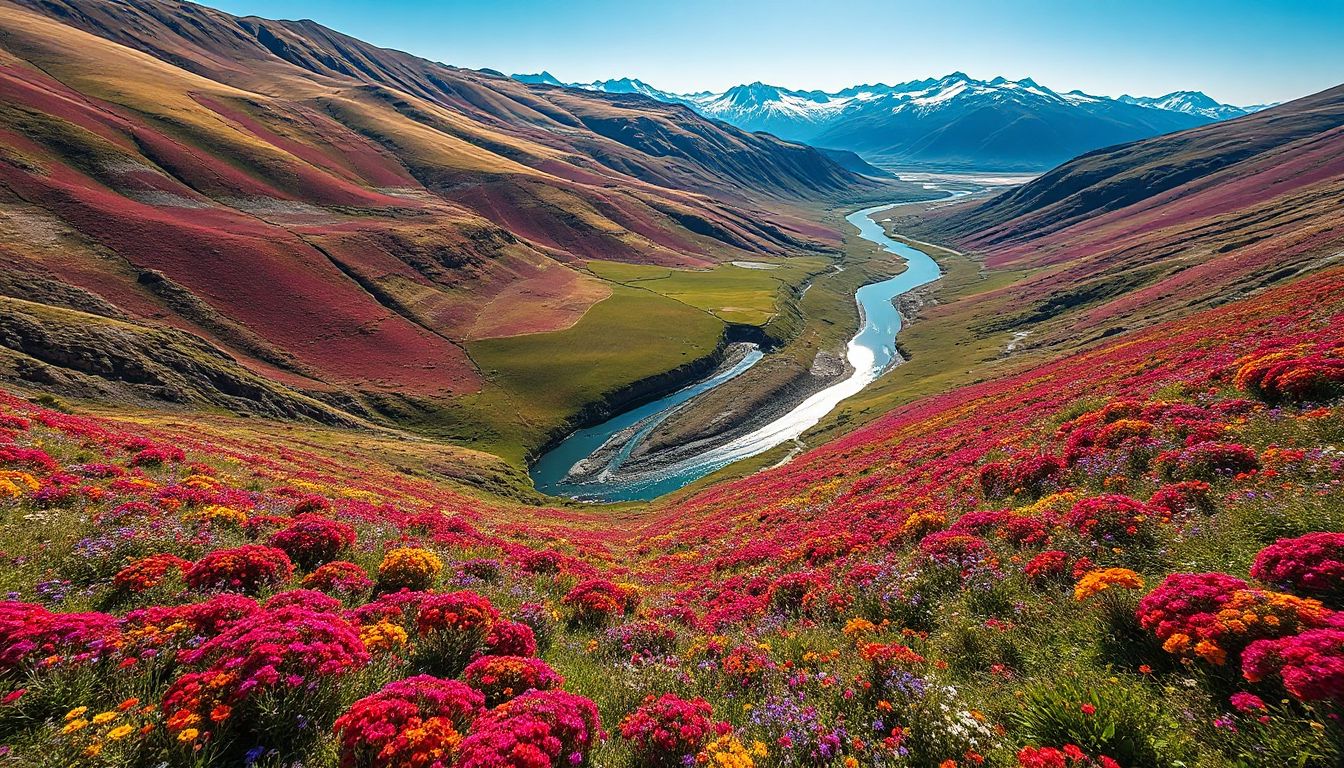
Source: https://www.ryrob.com/tools/
Discover the Magic: Why You Must See the Valley of Flowers
This unique spot provides you with vistas that you will never tire of. It is a unique location on planet earth. What’s more, the Valley of Flowers is truly a world treasure, renowned for its breathtaking landscapes and rich flora.
UNESCO World Heritage Site and Biodiversity Hotspot
The Valley of Flowers, a UNESCO World Heritage site, is extremely valuable globally. Moreover, it is a biodiversity hotspot, teeming with a vast array of plant and animal species. Consequently, the park’s diverse flora, mostly rare or endemic to the Himalayas, holds immense natural value.
The Seasonal Change: A Living Landscape
The Valley of Flowers transforms dramatically over the years. Thus, in the summer season (July to September), it becomes a vibrant picture, bursting with colorful blooms. In contrast, the rest of the year, it’s blanketed in snow or lush greenery. Witnessing this transformation from dormant to blooming is truly miraculous.
.
Cultural and Spiritual Significance
The Valley of Flowers is steeped in local legend, adding to its beauty. According to myth, Hindu deities visited this sacred place. And the Pushpawati River flowing through it holds great significance. Consequently, these myths imbue the valley with deep religious meaning. Thus, it makes it more than just a land of beautiful flowers.
Planning Your Visit: When and How to Go
So lastly preparation for the trip consists of knowing when to leave. It consists of knowing where you are going. Less planning facilitates the trip.
Best Time to Visit: A Peak Bloom Period

Source: https://shorturl.at/MeL7b
The best time to visit the Valley of Flowers is between July and September. Therefore, it is during this time that the monsoon rains. It bring the valley to life. The flowers are at their full bloom and color. Although it rains normally, the sky is clear and the air is fresh. Hence the sight is not blocked. Arrange for late July to August for the best view.
Getting There: The Road to the Valley
What’s more your hike generally begins from Govindghat, a village near Joshimath. There, you embark on a multi-day hike. Indeed, the hike leads you from Ghangaria, a base camp for Valley of Flowers and Hemkund Sahib as well. Furthermore, the hike can be exhausting. But every step is a mystery to the sight. In short, pre-booking and park fees are advisable, especially in peak months.
Permits and Regulations
To enter the Valley of Flowers National Park, a permit is required. Consequently, these permits help protect the fragile environment. Additionally, the park’s rules ensure that visitors can enjoy the valley while preserving it for future generations. Therefore, always follow the rules, such as staying on designated paths, to help conserve this beautiful place.
The Enchanting Floral Spectacle: Key Species to Spot
Valley of Flowers is a gallery of Mother Nature. Each flower adds to its beauty. Hence, get ready to witness some really pretty flowers when you go there.
The Iconic Blue Poppy (Meconopsis)
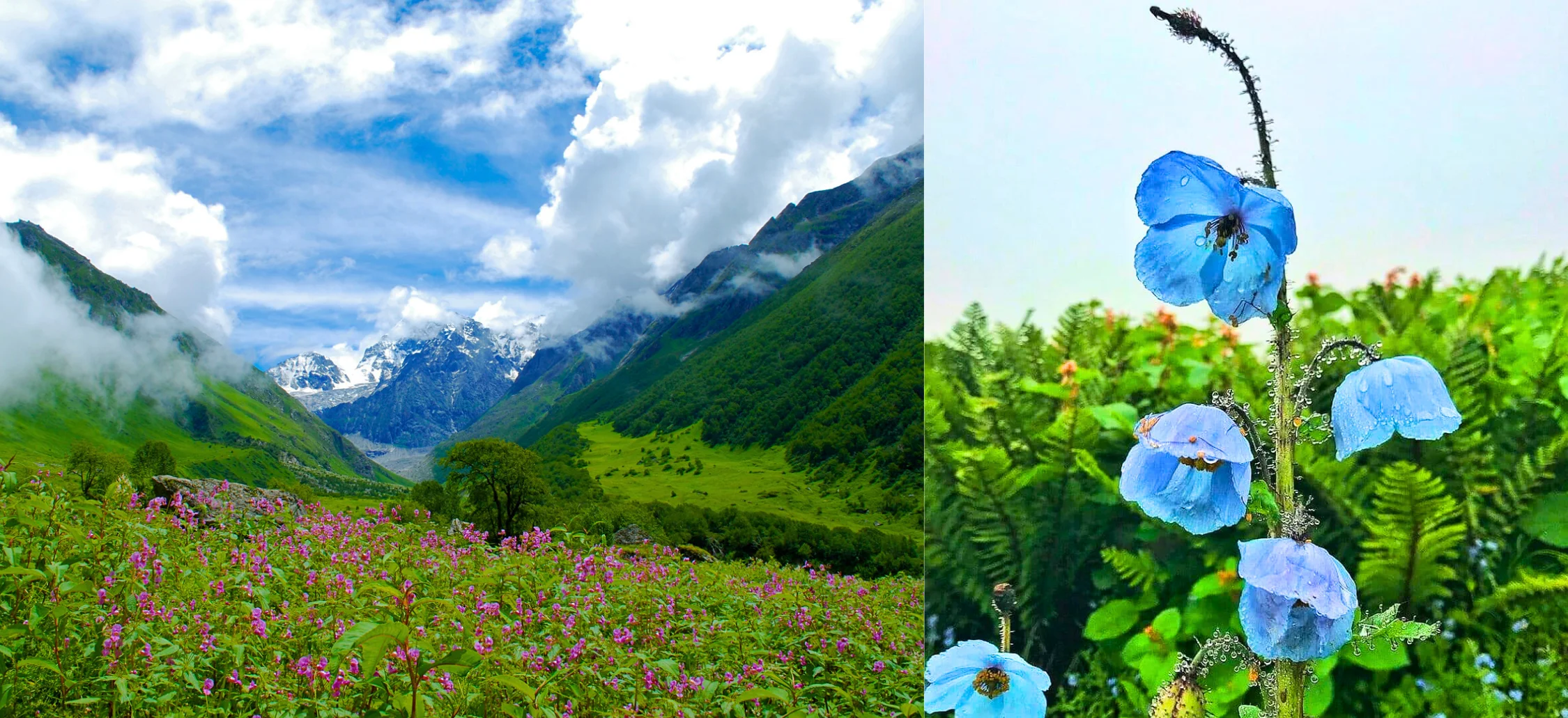
Source: https://shivaadventures.com/valley-of-flowers-trek/
The Blue Poppy is a highly sought-after sight in the valley. Thanks to its vibrant blue petals. Consequently, spotting one is like finding a precious jewel. Typically, this majestic flower thrives in the high-altitude weather. It is at the inner end of the valley, near streams.
The Sacred Brahmakamal (Saussurea obvallata)

Source: https://shorturl.at/vDBJs
Brahmakamal is a native sacred flower. It has also been referred to as the “Lotus of Brahma.” It flowers at night and is unique. It seems to be elevated in the valley. Its discovery is fortunate.
A Kaleidoscope of Other Blooms Within Different Flowers
Beyond the famous flowers, the valley boasts many others that add to its beauty. For instance, you’ll find the unique Cobra Lily, Happy Potentilla with its yellow clumps, and Purple Geraniums. It can form broad carpets. Additionally, Primulas cover the ground in soft pastel hues. It creates stunning patches of color, particularly in the middle meadow.
Trekking Essentials: What to Pack and Prepare
Preparation for your trekking entails taking the right things with you. It is meant to ensure you have a nice and comfortable experience. Prioritize comfort and safety.
Fundamental Equipment and Gear
Pack essentials like rain jackets and good walking boots. Bring warm clothing for cooler nights, even in summer. Don’t forget sun protection (sun hat and sunscreen) for high altitudes. Also, include insect repellent, especially for lower slopes.
Healthy Living: Hydration and Acclimatization
Altitude sickness is serious. Slow down and acclimatize to avoid it. Additionally, drink plenty of water throughout the day. Therefore, bring a refillable water bottle. Moreover, consider water purification tablets or a filter for safe refills.
Traveling on the Trails: What to Expect in Valley of Flowers
The trails can be steep and rocky, with streams to cross. To stay safe and preserve the environment, stick to the main trails. Additionally, show respect for nature. And it will show you respect back – a seasoned trekker’s wise words: “The mountain shows you respect when you respect it back.”
Beyond the Blooms: Examining the Environment of Flowers
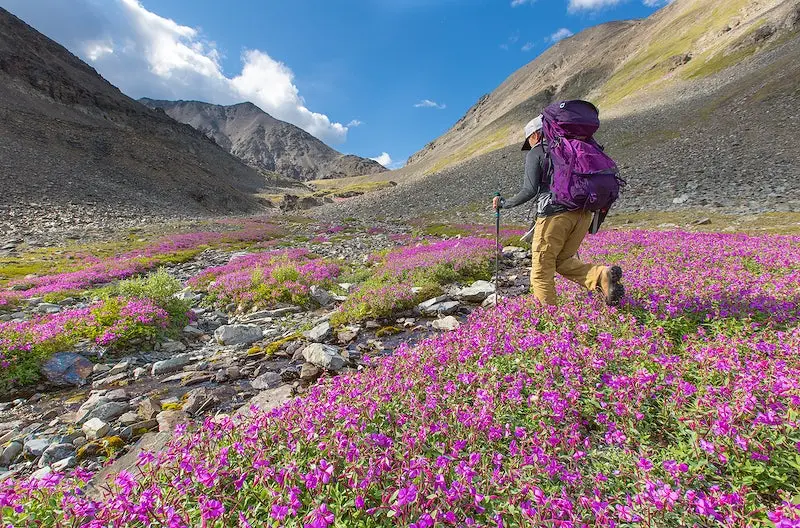
Source: https://shorturl.at/iPrUA
Your Valley of Flowers tour can be beyond flowers. Because the region around it is full of its own treasures. So, these regions in close vicinity are the ones that add to the experience.
Hemkund Sahib: A Religious Pilgrimage Amidst Valley of Flowers
Many travelers combine their Valley of Flowers hike with a trip to Hemkund Sahib. It is a sacred Sikh pilgrimage site. Located along a peaceful glacial lake. The Gurudwara sits atop the lake, offering breathtaking views. Furthermore, the Hemkund Sahib trek is challenging. But the serene atmosphere makes it worthwhile.
Ghangaria: The Gateway Village in Valley of Flowers
The base village of Hemkund Sahib and Valley of Flowers is Ghangaria. Additionally, it is a small town with a considerable population. In fact there are guesthouses to relax and small restaurants for meals. In particular, trekkers stay here overnight at least to get into the park. It is a cozy place to relax where one can prepare for the hike the next day.
The Himalayan Peaks
The Himalayan Peaks Encircling Even as you gaze at the flowers, look up frequently. Himalayan mountains tower high above the valley. These mighty mountains make a majestic backdrop. Their white-capped summits lend grandeur to the panorama. They remind you that you are in the midst of the great Himalayas.
Saving Paradise: Sustainable Tourism in the Valley
The Valley of Flowers is a unique destination. However, it is our responsibility to maintain it so. First of all, responsible travel makes its beauty last to subsequent generations. Therefore, leave No Trace Principles Always follow “Leave No Trace” principles. This means taking back what you bring. Never leave trash behind. And then, never pick flowers or disturb animals. Surprisingly, your effort makes a huge difference. It will help to keep this delicate ecosystem running. Every piece of trash that you take back counts.
Respecting the Ecosystem of Flowers
Since the alpine ecosystem here is extremely fragile. Finally, a wrong step out of path can kill sensitive plants. Therefore, always follow trails laid out. In conclusion, this prevents soil erosion. It maintains the tiny organisms which sustain the valley’s life. However, travel light and walk lightly.
Helping Local Communities
So, go the extra mile to make the locals comfortable. Employ local guides. Purchase supplies from local markets. Along with it dine in small, local restaurants. It benefits the locals who live in this beautiful corner of the country. In conclusion, your visit will benefit them.
Conclusion
To emphasize, Valley of Flowers is not merely the site of a beautiful flower show. It’s an excursion into raw beauty. You can make your visit successful. If you prepare and plan to visit. Don’t ever forget to visit responsibly. All the magic will be preserved. Pack a bag, lace up your boots. And prepare for something that will leave you speechless.


